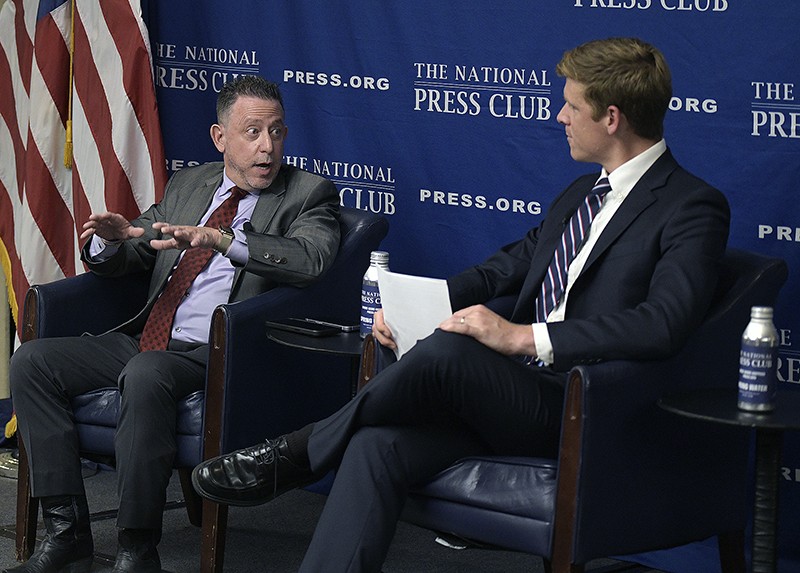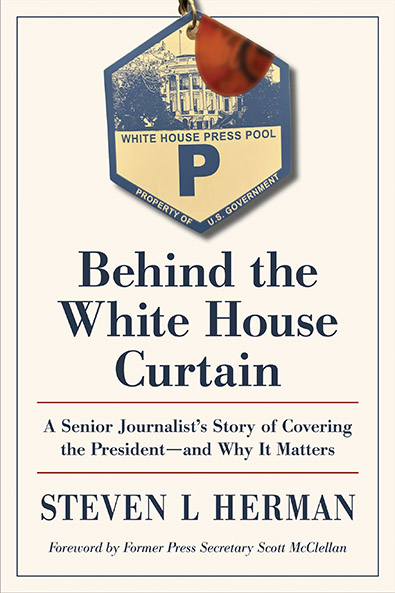Reporter says he thrived in chaos of covering the president
In the dark days of the COVID-19 pandemic, Steve Herman confronted a surreal scene in the White House briefing room. The president had commandeered the podium from the press secretary and public health officials and was issuing unproven medical theories and misinformation about the virus that had shut down the world.
For Herman, Voice of America’s chief national correspondent, it was another day following then-President Donald Trump. Herman discussed his new book, “Behind the White House Curtain: A Senior Journalist's Story of Covering the President―and Why It Matters,” on the mechanics and process of broadcasting an unconventional leader of the free world during a National Press Club book event June 5.

Trump shattered norms in his relationships with the press, Herman said. Journalists’ access to the president was at a high point –- the traditionally one-minute question-and-answer White House pool sprays became hour-long sessions, and once off-the-record Air Force One talks were suddenly on-the-record.
Yet reporters faced tremendous pressure to package Trump’s comments for a global audience that follows the president’s every word, he said. And Trump was combative with journalists who he felt were unfair.
Trump “really wanted and appreciated and, maybe to some degree, liked seeing his name on the front page every day and leading the newscasts,” Herman said.
At the same time, “the president was stepping on his own messaging, and that became the news, and I know that was much to the frustration of the people in the press office,” he said. “The president didn't like his press coverage, and the press, to some extent, didn't like the president.”
 Trump criticized Voice of America, calling it the Voice of China and the Voice of the Soviet Union, Herman recalled. “We, I think, handled it as well as it possibly could be handled under those really trying circumstances,” Herman said.
Trump criticized Voice of America, calling it the Voice of China and the Voice of the Soviet Union, Herman recalled. “We, I think, handled it as well as it possibly could be handled under those really trying circumstances,” Herman said.
On more than 100 Air Force One flights, working 18-hour days and through weekends, standing in the whirring helicopter blades of Marine One, Herman was tasked with lugging microphones, back-up batteries and SD cards and shouting questions on behalf of countries around the world.
“You're going to have a level of scrutiny that you won’t have anywhere else as a reporter,” he said. “One thing goes wrong, and you’ve really ruined your day and the days of a lot of our people because you have hourly newscasts waiting to get this material, especially if the president just said something significant.”
Herman said his technique was to keep his questions to seven words or fewer. That was often all you needed with Trump, he said, because “he already had an answer. He wouldn't even let you get to the end of the question, and you weren't probably going to get follow-ups.”
He said he felt it was important to write a book that puts readers in the driver’s seat of a White House reporter so they gain an appreciation of the job’s demands in a polarized political environment.
“You do feel excited to know where you’re at, but you really have to be on your toes constantly,” he said.
